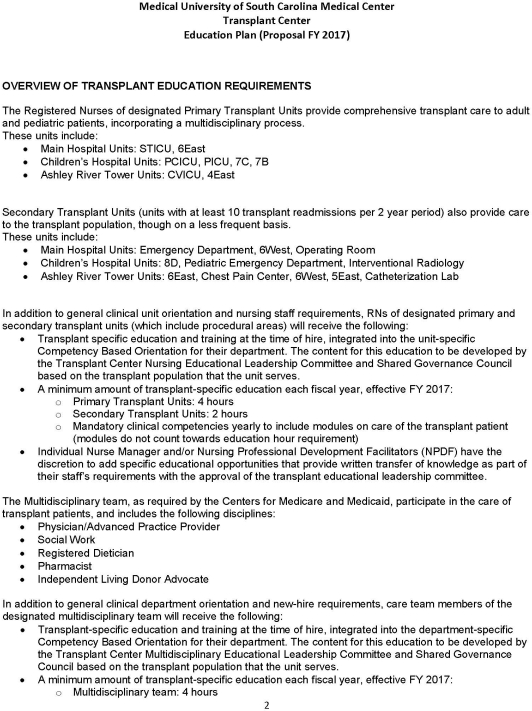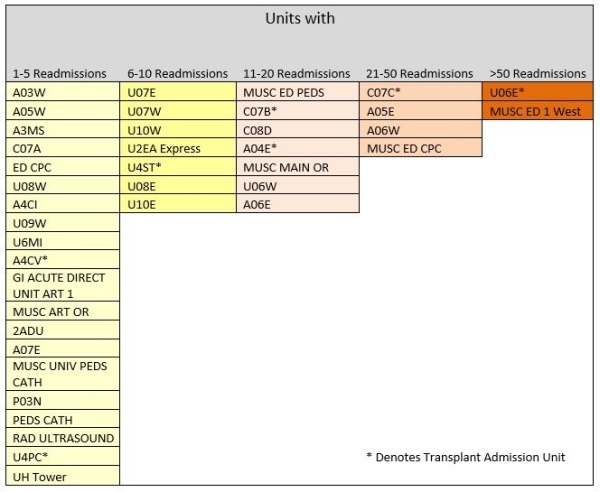Taking Your Center's Temperature: Using a Heat Map to Target Your Transplant-Specific Education for Regulatory Compliance
Medical University of South Carolina, Charleston.
Meeting: 2018 American Transplant Congress
Abstract number: 391
Keywords: Medicare
Session Information
Session Name: Concurrent Session: Regulatory Issues
Session Type: Concurrent Session
Date: Monday, June 4, 2018
Session Time: 4:30pm-6:00pm
 Presentation Time: 5:42pm-5:54pm
Presentation Time: 5:42pm-5:54pm
Location: Room 2AB
Background: Large, multi-organ transplant centers struggle with implementation of a comprehensive strategy for development and execution of a Transplant-specific education plan. Regulatory requirements for staff education continue to grow, and concrete data are needed to justify a transplant-specific curriculum, as education is frequently requested during regulatory site visits.
Aim: In anticipation of the new CMS interpretive guidelines, we describe a method to identify areas of high transplant patient volume and structure center-wide education.
Method: Transplant readmissions in our center from July 2014 to July 2016 were retrospectively analyzed. Admitting location was manually abstracted and collated into a heat map. Units receiving at least 10 patients over the course of the two-year study period were considered to be a transplant unit along with units caring for patients during their initial transplant admission. An education plan was developed based on an extrapolation of the Comprehensive Stroke Program plan, which had clear regulatory requirements for education. 
Results: A total of 963 transplant readmissions spanning 2 fiscal years (2014-2016) were reviewed. There were transplant readmissions documented for 40 different hospital units and procedural areas, with a range of 1 to 495 individual encounters. Eight of these units were previously identified as primary transplant units, as they care for patients immediately following transplant, and 11 as secondary transplant units with at least 10 readmissions. 
Conclusion: Using objective data facilitated hospital administration buy-in with approval of financial and educational time allocated for plan implementation.
CITATION INFORMATION: Anderson J., Cassidy D., Dubay D., Hart P., Hauser A., Pilch N. Taking Your Center's Temperature: Using a Heat Map to Target Your Transplant-Specific Education for Regulatory Compliance Am J Transplant. 2017;17 (suppl 3).
To cite this abstract in AMA style:
Anderson J, Cassidy D, Dubay D, Hart P, Hauser A, Pilch N. Taking Your Center's Temperature: Using a Heat Map to Target Your Transplant-Specific Education for Regulatory Compliance [abstract]. https://atcmeetingabstracts.com/abstract/taking-your-centers-temperature-using-a-heat-map-to-target-your-transplant-specific-education-for-regulatory-compliance/. Accessed July 3, 2025.« Back to 2018 American Transplant Congress
